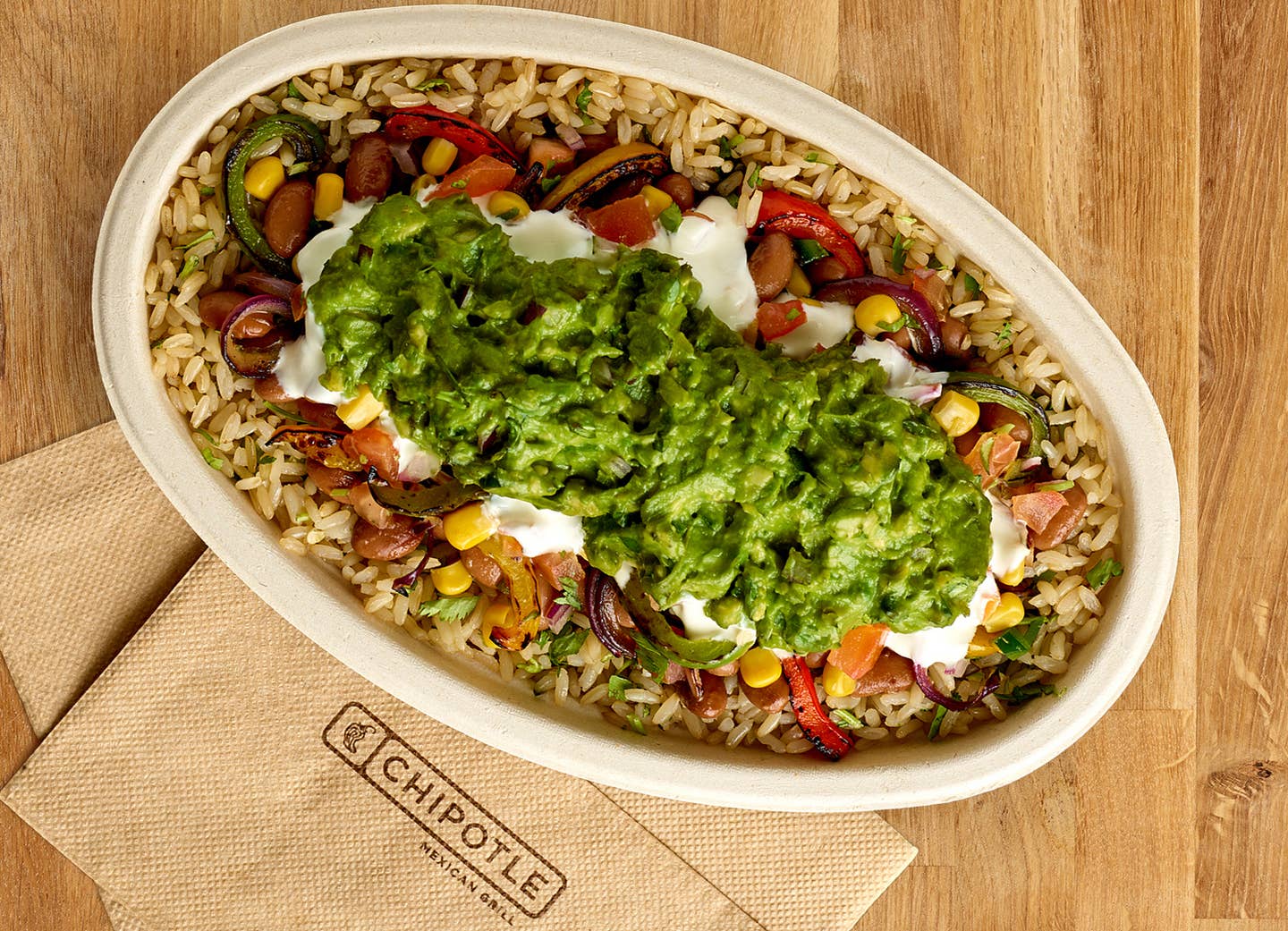
Report: Vegan Meat Alternatives On Track to Become Cheaper Than Beef
One of the main reasons people won't try plant-based meat alternatives is the price. But as the cost of beef and pork has steadily risen in recent months, and the price of alternative meat products made with pea protein and other plant-based ingredients is expected to fall, the price gap is expected to be erased by 2023.
So far the gap is still significant, at $3.95 for a pound of beef and $7.79 for a pound of Beyond Meat, but a new report from the Good Food Institute (GFI) revealed that price parity could happen far sooner than expected. Their calculation shows that the price of plant-based meat is projected to fall below that of conventional meat in 2023, allowing customers the option of affordable alternative proteins.
The nonprofit organization conducted the study alongside consumer research firm Mindlab to examine the consumer motivators for plant-based meat. While taste is consistently the most important factor for consumers, the study discovered that price ranked second. Plant-based meat is increasingly becoming more mainstream, but the researchers noted that to achieve widespread acceptance and demand, price parity is essential for the alternative protein market.
"We anticipate this gap [in price] shrinking as plant-based producers increasingly scale up production, achieve economies of scale, and seek price parity with their conventional competitors," the report found. "Indeed, the price gap is smaller for more developed categories like milk and butter."
Recent Neilson data reveals that as of today, plant-based meat is approximately twice as expensive as conventional beef, three times as expensive as pork, and four times as expensive as chicken. So for many consumers, purchasing plant-based meat is still a stretch, when it comes to allotting their family food budgets. The study emphasizes that by closing the price gap, the plant-based meat industry will open itself up to new consumers. The study authors posit that when production becomes more efficient and meat prices continue at inflationary rates, prices could reach parity within a year.
“Reaching price parity comes down to scale,” Corporate Engagement Project Manager at GFI Emma Ignaszewski told VegNews. “Making the plant-based meat supply chain more efficient and more resilient to risks can result in lower costs for the manufacturer—and ultimately, more affordability for the consumer.”
Plant-based meat growing in popularity
Plant-based protein is becoming popular worldwide, appearing more often in retail and foodservice distributors than ever before. Vegan meat is appearing on restaurant menus 1,320 percent more since the start of the pandemic. The accelerated growth of the plant-based meat industry will allow vegan brands to scale up production. By maximizing production capabilities, plant-based companies will begin to truly compete with the larger animal agricultural giants.
The Good Food Institute report also points to another study conducted by investment firm Blue Horizon and business consultants BCG. That 2021 report found that achieving price parity would be the most effective method of undercutting sales of animal meat worldwide. While consumers are motivated by sustainability and health benefits to try plant-based foods, price differentials are a significant deterrent. The report projects that by 2032, enough meat and dairy alternatives will exist to eclipse the animal-agriculture sector for market share.
The BCG report predicts that the plant-based proteins made from soy, peas, and other sources could first reach parity in 2023, but other meat alternatives will follow closely behind. The report notes that price parity will occur for protein substitutes made from microorganisms such as yeasts, single-celled algae, and fungi in the next phase of growth of these products. Cultured meat, grown in the lab, could potentially meet price parity within the decade. By making all three alternative products – pea protein, new microprotein, and eventually cultured meat – more affordable options, eventually, consumers will see meat and dairy products as prohibitive, at which point they could become obsolete or at least a rare luxury for a significant number of consumers.
“None of this can happen unless consumers are happy with the taste of plant-based meat products. It doesn’t help to scale up something consumers won’t purchase,” Ignaszewski said. “So above all, companies have to make plant-based products that come ever closer to tasting the same as or better than conventional meat. Scaling a plant-based product that tastes just like conventional meat—or better—to the point that it also reaches price parity is a golden formula.”
Is Plant-Based Really Cheaper?
Plant-based meat options have rapidly become more affordable over the last decade. Last year when chicken prices started surging, the plant-based company Alpha Foods realized the potential for cheaper meat alternatives. Calling the surge “chickenflation,” the vegan brand promised to cut its own products’ cost by every cent that the price of conventional chicken went up. Companies across the plant-based sector have been working to make products accessible to the public, and now, plant-based meat will soon be achievable on a budget.
Despite the room to improve regarding plant-based meat, vegan eating is still remarkably cheaper for consumers than a meat-heavy diet. People can save up to nearly 30 percent on food by switching to a plant-based diet. By increasing vegetable and fruit consumption, people cut down on unnecessary dairy- and meat-filled products that spike up grocery costs.
One report from researchers at Deakin University’s School of Exercise and Nutrition Sciences concluded that people can save $1,260 annually by switching to a plant-based diet. Soon, people aiming to save money will have nothing deterring their next plant-based protein purchase, because, by next year, plant-based eating will be more affordable in every category.
The Surprising Reasons these Five Country Singers Went Meat-Free
1. Carrie Underwood Loved Her Family's Farm Animals
Seven-time Grammy Award winner Carrie Underwood has been hailed for her “enormous” vocal range. When it comes to her diet, Underwood’s a fan of breakfast burritos and lots of tofu. She doesn’t shy away from the carbs, either. According to Cheat Sheet, one of her favorite snacks is a toasted English muffin with peanut butter.
2. Blake Shelton Wants to Keep Up With His Older Girlfriend
Singer, songwriter, and “The Voice” coach, Blake Shelton, 43, has been working to stay fit recently with help from his long-time love, Gwen Stefani, who is a vegetarian and told him to get off the meat if he wants to feel fitter and lose some weight. Shelton has been trying to keep up with Stefani's impressive fitness level, according to an interview Stefani gave this fall. The former No Doubt singer and Hollaback girl is a longtime vegetarian, eats a mostly vegan diet, and is super fit-- and at 50, looks younger than her years. A source told Gossipcop, “Gwen’s told him the way to lose it is to stay the hell away from meat and bad carbs.” We're rooting for him!
3. Shania Twain Has the Key to Gorgeous Skin
The best-selling female country music singer in history isn’t buying any expensive steak dinners after a performance. The “Queen of Country Pop” has sold more than 100 million records but says she keeps her meat-free diet simple. She is both vegetarian and eats very little dairy -- though at times has said she does eat eggs.
4. Annette Conlon, Folk Artist with a Passion
Americana singer and songwriter Annette Conlon is also a passionate vegan. She started “The Compassionette Tour,” in an effort to bring compassion, social consciousness, human interaction, and animal issues to a mainstream audience.
5. Johnny Cash, Walked the Vegan Line Late in Life
The Man in Black is synonymous with country music, even nearly two decades after his death (1932-2003), probably in part because of the biopic about his life starring vegan actor Joaquin Phoenix. Ask any die-hard country music fan (or your dad, for that matter) and they will tell you that Johnny Cash was one of the best-selling musicians of all-time. His scores of hits include “I Walk the Line” and "Hurt" "A Boy Named Sue" and dozens of others. Cash himself was believed to have lived meat-free later in life to help combat some health issues. At Johnny Cash’s Kitchen and Saloon in Nashville, you can also load up on the meat-free dishes as the restaurant boasts a fully stacked veggie menu that includes greens, sweet potato mash, and fried okra.
More From The Beet






